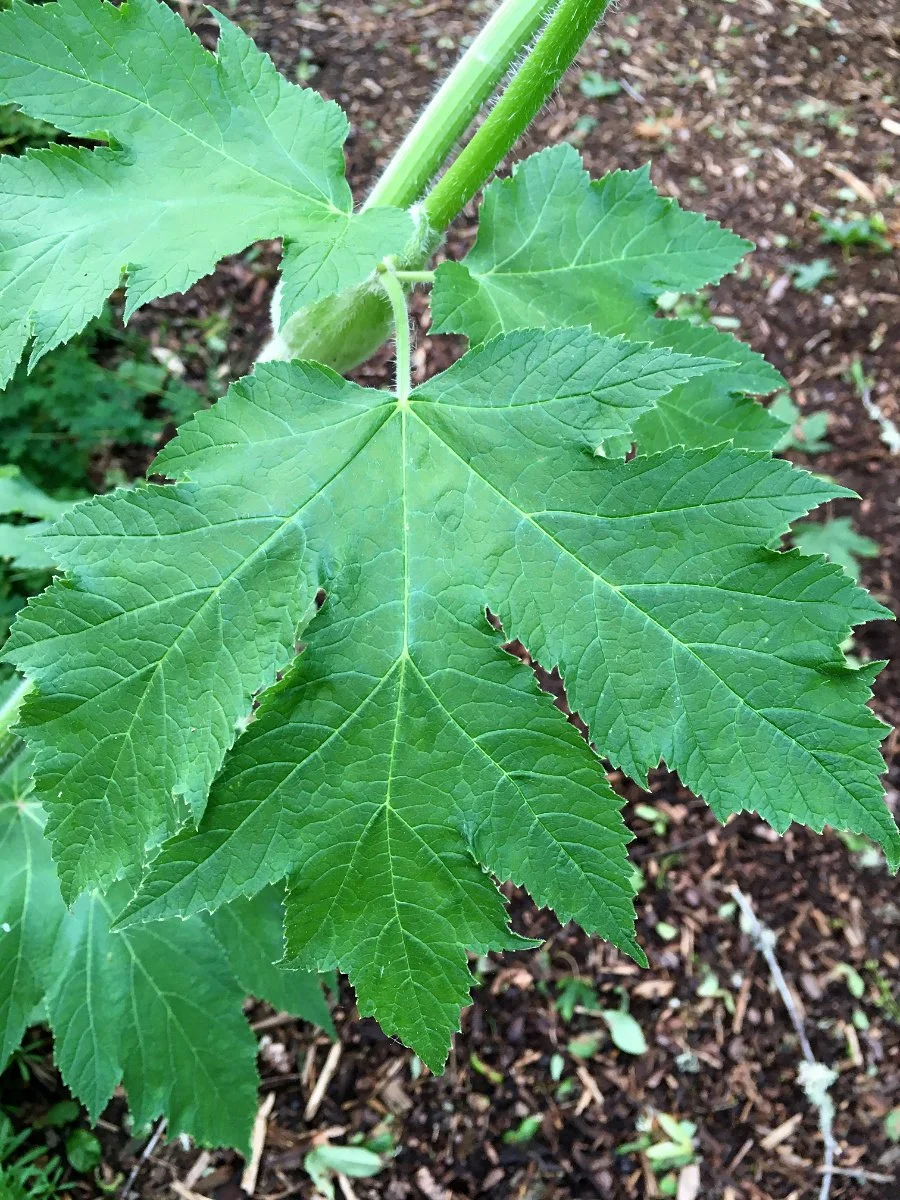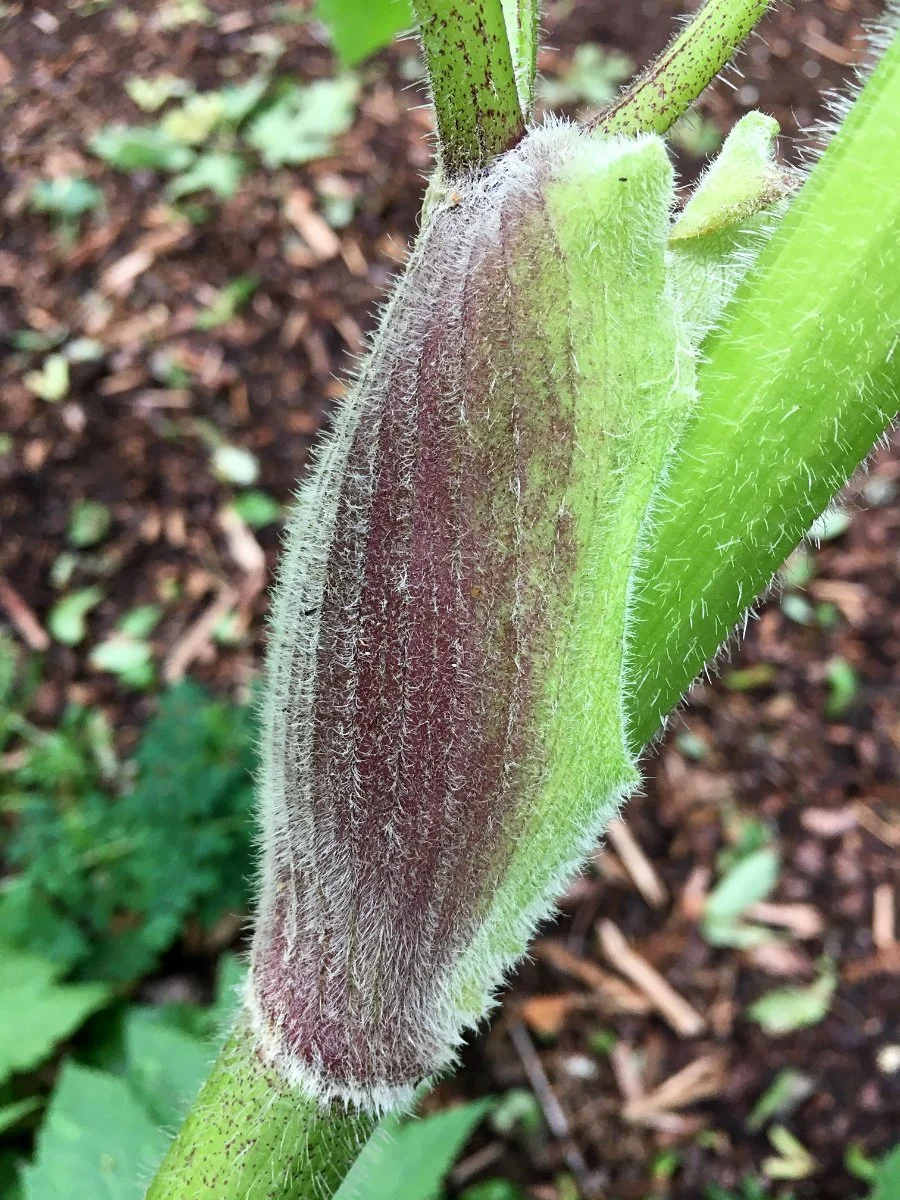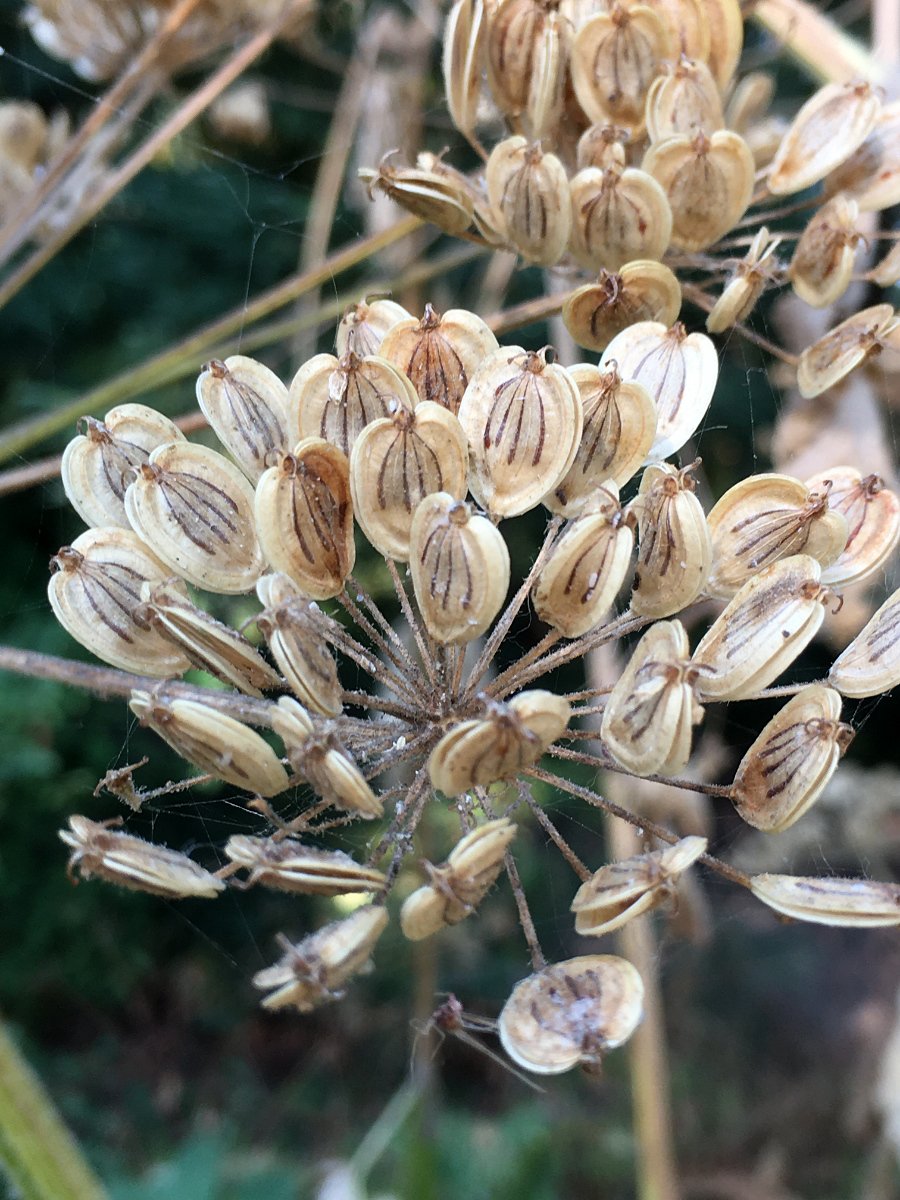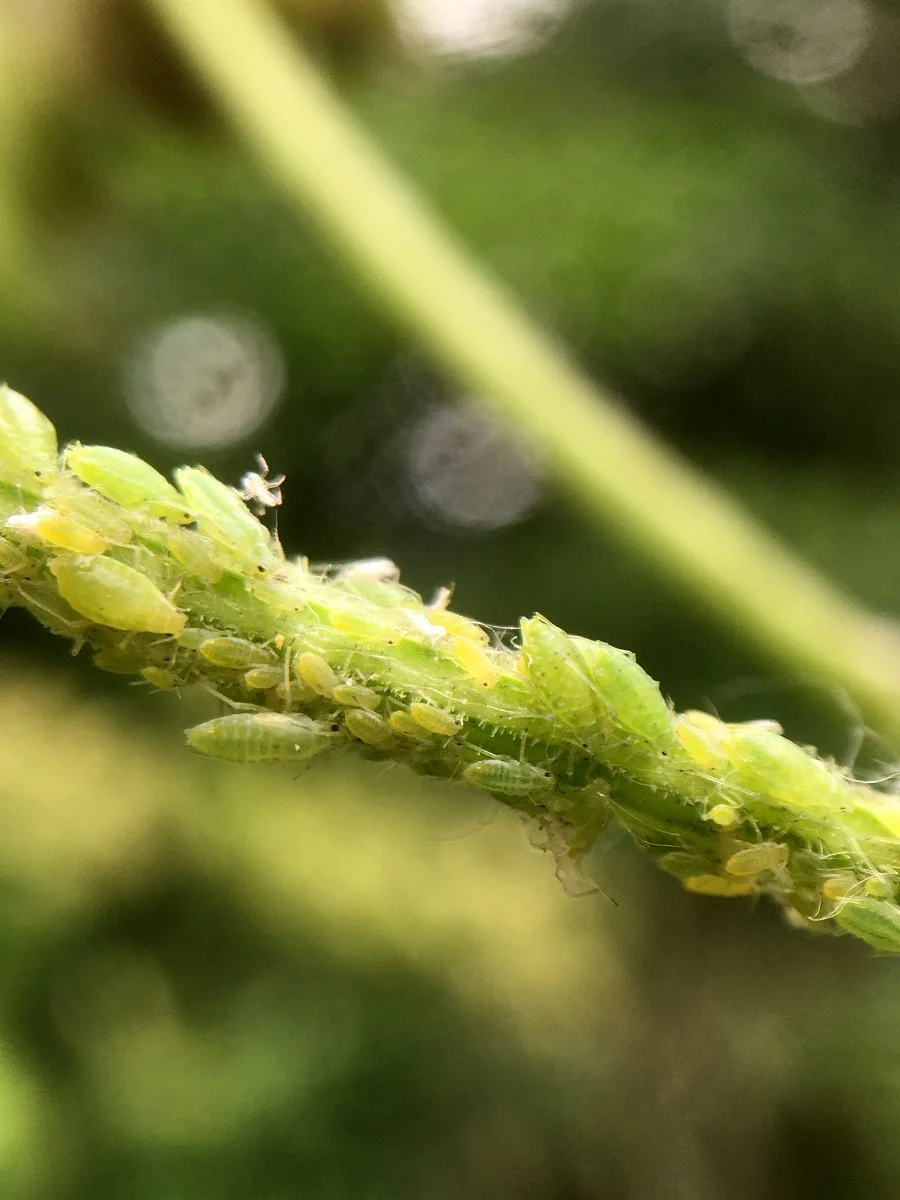Cow-parsnip (Heracleum lanatum) Carrot Family (Apiaceae)
Heracleum is the Greek term after Hercules, and lanatum means woolly. This plant is fuzzy and grows to enormous size, from 1 - 3 meters tall— that is almost 10 feet! It is a perennial which grows from a stout taproot or a cluster of fleshy, fibrous roots. Pojar and MacKinnon describe their habitat as streambanks, moist slopes and clearings, upper beaches and marshes, meadows, thickets, avalanche tracks, and roadsides. It is common from sea level to subalpine elevations. Out at the arboretum, it is common along the river bank trail and in the wetlands.
Flower
The flowers are small and white. They grow in umbrella-like clusters from a number of flower stalks or pedicels, nearly equal in length, that spread from a common center, known as an umbel. These clusters radiate from the end of stalks forming another large umbel.
Leaves
The leaves are large, stalked, compound, divided into three segments, each coarsely toothed and palmately lobed, woolly-hairy at least when young. The upper leaves are sometimes simple and maple-leaf-like. The base of the stalk is conspicuously inflated and winged. As the plants mature, I will often find some of the leaves marked with scribbles from a leaf miner tunneling through under the surface.
Stem
The stems are hairy and usually spattered with red splotches and hollow. Looking back at some of the photos of the stems, I noticed that they are plain green and maybe develop red spots with age. I’ll watch for it this year and see what happens.
Seeds
The seeds are heart-shaped, with or without hairs, 1-seeded, and flat. They have 4 distinct lines curving downward from the middle of the top.
Life on a Cow-parsnip
Carrot Seed Moth
At the arboretum, many of the seed clusters of this plant become infested with the caterpillar of the carrot seed moth. The seed clusters become a mass of silky webs. These caterpillars will bore inside the stem to spin a cocoon.
Downy Woodpecker
You’ll often find Downies hopping along the stems, creating an opening, and retrieving these larvae.
Ahpids
Many of these plants become infested with aphids sucking on the plant stems. This draws in ladybugs and bushtits to feast on them. Seeing a bushtit clinging to one of the stalks of a flower cluster gives some perspective on the size of this plant.
Quick Reference:
Height: 1 - 3 meters; 3 - 10 feet.
Leaves: Large, stalked, compound, divided into three segments, each coarsely toothed and palmately lobed.
Flowers: Small and white, grow in umbrella-like clusters
Habitat: Streambanks, moist slopes and clearings, upper beaches and marshes, meadows, thickets, avalanche tracks, and roadsides.
Journal Location:
Mt. Pisgah Arboretum, Eugene, OR
Mt. Pisgah Arboretum Website
Mt. Pisgah Arboretum Plant List
Pocket Gopher
One day I was walking by one of these plants and saw it being dragged underground by a pocket gopher into one of its tunnels.
References
Mathews, Daniel. Cascade-Olympic Natural History. Raven Editions in conjunction with Portland Audubon Society, 1988.
Pojar, Jim, and Andy MacKinnon. Plants of the Pacific Northwest Coast: Washington, Oregon, British Columbia and Alaska (Revised). B.C. Ministry of Forests and Lone Pine Publishing, 1994.








































